We're publishing Jerome's latest, detailed, article on vitamin D to kick off the launch of our new Test & Take: vitamin D campaign - possibly the cheapest way to support your immune system and protect yourself and your family against respiratory infections like covid-19.

By Jerome Burne, investigative health journalist and author, HealthInsightUK
This was the opening paragraph of an article on latest developments with vitamin D that I wrote for a magazine 10 years ago:
‘Until fairly recently the general view was that vitamin D was only needed to grow healthy teeth and bones and that we could get enough from a bit of sun exposure plus a diet that included foods such as eggs and fish oil. But now some scientists are saying that vitamin D does a lot more for our health than just protecting bones. However to get this benefit, which is said to include cutting the risk of infections and various chronic diseases including cancer, heart disease, diabetes and multiple sclerosis, we need much higher levels than most of us get in the UK.’
What stands out is that the same key points are still worth making a decade later - does more than protect bones, can cut risk of infection but we need higher doses than are currently approved. There is little sign, however, that this information has had any impact on the official handling of the pandemic
We are now heading into winter, a time when much of the population becomes deficient. The number had just been calculated back then by Dr Elia Hypponnen of the Institute for Child Health in London. She had published a paper revealing that by Easter every year 90% of the population’s vitamin D levels are seriously depleted. “High dose supplements of the vitamin should be more easily available over the counter,” she told me.
Even that advice has largely been ignored, although Public Health England (PHE) has lately advised that children and adults take 10mcg (micrograms) or 400IU - regarded by many experts as an absolute minimum. But what about the seriously depleted elderly, known to be at higher risk?
Buried in the government’s health statistics there is data about the level of Vitamin D deficiency among the over 65 and number of people that involves. It has never been released to the public but is available if you know where to look, and it is shocking.
According the latest government figures, 24% of those over 65 are deficient in vitamin D - below 25nmol/l - (UK measurement, which is 10ng/mL in America) and since 18% of the population is over 65 that means there are over 2,850,000 people who have less than the absolute minimum for bones, let alone sufficient to help fight an infection (Vitamin D measurements are confusing. What’s measured in the blood is 25(OH)D which is what sunlight or supplement derived vitamin D turns into. Multiply the US measurement by 2.5 to get the UK one).
The advice given by NICE and the policy of NHS not to routinely test or treat the elderly for mineral or vitamin deficiencies - yet another way in which they have been failed, since many trials - see below - have found that people with very low levels do worse when infected with covid.
But even when the NHS recognised the importance of Vitamin D, albeit for bone and muscles rather than for the immune system, and recommends supplementing those in care homes, it still doesn’t happen because, a recent BMJ study revealed, bureaucratic confusion over who was supposed to dish it out.
Interviews with care home staff found they thought checking on vitamin D status was the job of GPs and managers and feared they would be in trouble for providing over-the-counter tablets. Steps are now being taken to revise the guidelines. Such bureaucratic crossed wires don’t inspire confidence that any of those almost three million deficient over-65s will have had their blood levels boosted any time soon.
The official line is that we still don’t know that vitamin D does anything for the immune system - the sort of organisation that should know is the National Pharmacy Association, which currently warns: ‘There is no evidence that vitamin D reduces the risk of COVID.’
But even ten years ago it was known that vitamin D could directly affect DNA, which provided a link between it and the immune system. The latest research had discovered that almost 3,000 genes had their activity boosted or damped down by the presence of vitamin D.
In that article I quoted one of the most senior vitamin D researchers, Professor Michael Holick, as saying: "Vitamin D can turn genes on and off. That’s the reason it can improve resistance to infection. Healthy amounts boost the activity of the gene that makes a peptide which kills bacteria, viruses and fungi." Holick was then the director of the Bone Healthcare Clinic and the Vitamin D, Skin and Bone Research Laboratory at Boston University School of Medicine.
So, had vitamin D been a drug in the last ten years there would have been large sums devoted to investigating and testing it, but that has not happened. With the result that faced with a predicted rise in covid cases and deaths, there has been a belated scramble to establish what vitamin D can do.

‘The anti-viral and anti-inflammatory actions of vitamin D make it an interesting candidate,’ says Professor Adrian Martineau of Barts Health NHS Trust ‘but there is genuine uncertainty about whether it can support the immune system and so fend off the virus. We need a trial to resolve it.’
Martineau is heading a large trial of 5,440 volunteers to test the idea, which is due to start at the end of the month. The treatment group will get 3,200 IUs a day for six months.
It seems unlikely that the NHS will take any decisions about widespread use of vitamin D supplements for prevention or treatment until the trial is completed and published, which could be many months away. Meanwhile other countries are not being so cautious.
For instance, a White Paper has recently been published in Switzerland recommending supplementation for the general population “...and especially adults aged 65 and older” of 200mg of vitamin C and 2000 1U of vitamin D.
It begins by clearly setting out the benefits of nutrition for a "...well-functioning immune system as a modifiable factor to reduce the risk of virus infections." It refers to: "...reviews that showed a benefit of vitamin D supplementation for preventing lung tract infection for all age group." One of these was a meta-analysis of trials involving over 11,000 people, which had found that supplementation reduced the probability of infection by 36%.
Another trial referred to is an Israeli one, involving nearly 8,000 health care workers, which found that those with a low vitamin D level - below 75 nmol/L - were at double the risk of COVID infection.` It is striking that this is effectively three times higher than the deficiency level used by the NHS.
Elsewhere trials comparing survival between those getting higher and lower amounts of the vitamin consistently show that people with higher levels do better than those with lower - especially those with a deficiency level 25nmol/L.
Many of them have been posted on a “wiki” site dedicated to vitamin D. A page run by Dr David Grimes, long-time vitamin D researcher and author of ‘Vitamin D and Cholesterol’ describing his research into the link between heart disease and latitude and how the risk rises the further north you go.
On Oct 9 he posted a summary of results of recent studies from around the world that found a link between the level of vitamin D in the blood and the chance of getting or surviving covid-19.
That is only a correlation but what stands out is that the level considered safe in the UK - 30nmol/L - is far lower than nearly all other countries. Some consider 75nmol/L the point where immune system benefit kicks in.
For instance: A study from the Philippines found that the disease was mild in 85% of those whose blood level was above 75nmol/L (30ng/ml) while among those below 75nmol/L (30ng/mL) just 5% had mild disease, for the rest it was moderate, severe or critical.
The same crucial level of 75nmpl/L (30ng/mL) seemed to play a major role in whether you lived or died. An Indonesian study reported that of those above it, 96% survived but only 12% of those below did. And among those below 50nmol/L (20ng/mL) - a level your GP would consider adequate - just 1% survived.
An Indian study reported a less dramatic difference around a cut off point of 87.5 nmol/L (35ng/mL). Among those who were over that level, 62% had severe disease, compared to 85% of those below it.
A small randomised controlled trial (RCT) from Spain measured the difference between those getting a concentrated form of vitamin D (Calcidiol) and those with regular treatment. Half (13) of those getting regular treatment needed intensive care and two of them died. Just one of 50 on Calcidiol needed intensive care and none died.
These were all relatively small studies, some with dramatic differences between those above and below the cut-off point which seem excessive, but all showed higher levels were more protective. Many other factors, however, could have made a difference as well.
This prompted researchers in Boston to do a large RCT with close to two hundred thousand people to establish a more accurate figure. It took a lower cut-off point 50nmol/L (20ng/mL), considered healthy in the UK, as the cut-off point and found that those below had a 12% risk of infection compared with 6% for those above it. A less dramatic difference than others but still in the same direction.
These and similar studies suggest that blood levels considered sufficient in the UK are too low and that there is good evidence for routinely testing those at risk - something NICE has consistently refused to recommend. So just how much vitamin D should we be getting?
Official recommendations vary widely. In the UK it's 400 IU (international units) or 10mcg (micrograms). The EU and many countries go for 400-600IU, the exception is Italy's 2000 IU (50 mcg), in the USA is 1000 IU (25 mcg). At the other end some vitamin D researchers and experienced clinicians, such as Professor Holick, recommend 4000 to 5000 IU (125 mcg) for daily maintenance.
If the UK trial using 3,200 IU (80mcg) shows a protective effect, will that amount be given to the millions of those over 65 who are deficient?
Until all this is clearer it makes sense to test what your own levels are at somewhere like GreenVits – Kiweno DIY Vitamin D test (sends results to your smart phone in approx. 15 mins) or VitaminDtest.org.uk (NHS pathology lab). Then taking the sort of amount recommended by Professor Holick is very unlikely to be harmful.
When it comes to treating severely infected patients there are a couple of trials suggesting that very very high doses can be effective.
In one trial, 30 mechanically ventilated, critically ill patients with pneumonia were given 1,250µg (500,000iu) of vitamin D3. This significantly increased their haemoglobin concentrations, improving iron metabolism and the blood’s ability to transport oxygen properly. Like vitamin C, this change would rapidly reduce the damaging inflammatory immune reaction known as a cytokine storm.
Another high-dose study in Georgia US, gave ventilated intensive care unit patients with mean baseline vitamin D blood levels below 50nmol/l either 1,250µg (50,000iu) or 2,500µg (100,000iu) of vitamin D daily for five days. It reported that hospital length of stay was reduced from 36 days in the control group to 25 days in the 250,000iu group and 18 days in the 500,000iu group. That’s a halving of hospital stay, and costs, in the high vitamin D group.
The benefits of a very high dose supplement - 80,000 IU, known as a ‘bolus’ - also showed up in a recent trial involving 66 frail elderly patients in a French nursing home. All were aged 77 and got standard treatment including steroids and antibiotics, but 57 of them got the bolus as well. It wasn’t a RCT but there was a very significant benefit for the treated group - 82% of them survived compared with 44% of those without the bolus.
But to use vitamin D most effectively clinicians don’t just need to know ‘how much?’, but also ‘in what combination?’ At the moment the trials used to test vitamin D and other nutrients are designed as if they were pharmaceutical-style magic bullets. But nutrients don’t work like that.
They are not lone anti-viral gun slingers; they are team players. To work best they need to be used in cocktails and combinations. All antioxidant vitamins need to be recharged after damping down a damaging oxidant and what does that? Another vitamin.
The most sophisticated and detailed protocol for treating covid patients has been developed by Dr Paul Marik, Chief of Pulmonary and Critical Care Medicine Eastern Virginia Medical School, Norfolk, VA. It runs to 34 pages and is available for download here - Evms Critical Care Covid-19 Management Protocol
Marik suggests that Vitamin D "...may be a very powerful prophylactic and treatment strategy against covid." As part of the treatment package for severely infected patients, he recommends 20,000 to 60,000 IUs in a single oral dose, followed by 20,000 IUs weekly until discharged from hospital.
For the early stages of an infection he suggests combining quercetin (a plant compound) with zinc, which is essential for the immune response, while quercetin is antiviral it also helps zinc enter cells. Vitamin C is part of the cocktail, improving the anti-viral action of quercetin as well as acting in its own right as an antioxidant, antiviral and anti-inflammatory agent.
A further development, just proposed in the BMJ, is for nutrients to be combined with the low carb ketogenic diet. The rationale is that high carbohydrate diets are linked with diabetes, which results in high blood levels of glucose and possibly insulin, and diabetics are more at risk for covid infection. But why?
The key factor, the paper suggests, is that high insulin and glucose brings down magnesium levels, which in turn makes vitamin D less effective, raising the risk of infection for these patients and the elderly, who may well be magnesium deficient anyway for a variety of reasons. The recommendation of the authors is to bring down the glucose and insulin levels with a low carbohydrate diet and to supplement with vitamin D, magnesium and zinc. This paper makes no mention of vitamin C which works closely with magnesium
It’s a long way from supplementing with 400 IUs but a health service interested in health would factor this in and run a big trial on it.








Comments
your voice counts
29 October 2020 at 9:33 am
I want to thank you for this post.
25 years ago my husband suffered and diagnosed as having M.E.
We were fortunate to see Dr Williamson- an immunologist at Royal Preston Hospital.
He was amazing- he prescribed vit b.c.d.zinc magnesium and evening primrose oil.
I have added echinacea acidophillus and manuka honey to the list.
For 20 yrs my husband has managed to work in a local college with very little time off.( 2 years ago a landfill problem involving h2s - and methane. and other chemicals affected our health badly- but even then we continued with our regime.)
I tried to advise Public health England at the time.about the vitamins and herbs- which the WHO recognise and achnowledge themselves in an article written not long ago.
It's as if the pharmaceutical companies are biding listened to more because of money obviously.
I want to thank you for your article and l will be praying someone with common sense will take notice and implement changes
God Bless
Prayi be foy you.
Marion
29 October 2020 at 11:44 am
Thankyou for this article. It makes complete sense to me. I take vitamin D and K2. Vit b and Vit c.
01 November 2020 at 5:54 pm
Thank you for this really informative article. I think the lid is probably being kept on this subject by the government as pharmaceutical companies find a way to patent a suitable synthetic vitamin D analogue that could be rolled out. Am i wrong?
Your voice counts
We welcome your comments and are very interested in your point of view, but we ask that you keep them relevant to the article, that they be civil and without commercial links. All comments are moderated prior to being published. We reserve the right to edit or not publish comments that we consider abusive or offensive.
There is extra content here from a third party provider. You will be unable to see this content unless you agree to allow Content Cookies. Cookie Preferences